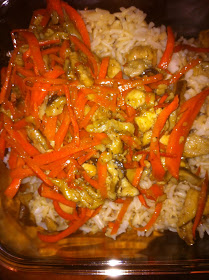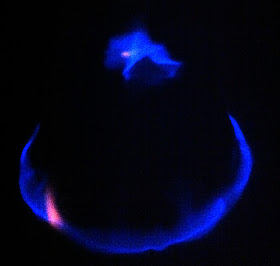It's Fall! It's not 90F+ in my kitchen!
Let's bake.
These are two recipes I made for a tea party.
The first is gingerbread from Beeton's Book of Household Management (you know my love of historical British cookery).
Here's the text:
THICK GINGERBREAD.
1760. INGREDIENTS.—1 lb. of treacle, 1/4 lb. of butter, 1/4 lb. of coarse brown sugar, 1-1/2 lb. of flour, 1 oz. of ginger, 1/2 oz. of ground allspice, 1 teaspoonful of carbonate of soda, 1/4 pint of warm milk, 3 eggs.
[Illustration: GINGERBREAD.]
Mode.—Put the flour into a basin, with the sugar, ginger, and allspice; mix these together; warm the butter, and add it, with the treacle, to the other ingredients. Stir well; make the milk just warm, dissolve the carbonate of soda in it, and mix the whole into a nice smooth dough with the eggs, which should be previously well whisked; pour the mixture into a buttered tin, and bake it from 3/4 to 1 hour, or longer, should the gingerbread be very thick. Just before it is done, brush the top over with the yolk of an egg beaten up with a little milk, and put it back in the oven to finish baking.
Time.—3/4 to 1 hour. Average cost, 1s. per square.
Seasonable at any time.
I basically followed this one by-the-book, but for a few changes:
- I replaced baking soda with baking powder, and in doing so increased the volume to 3x (1tbspn) since baking powder is 1/3 baking soda by volume
- I ignored her mixing instructions, which seemed frankly bizarre and instead mixed ala the muffin method (mix all the dry ingredients together, all the wet together, then just combine)
- I did not have a 1lb of treacle, so I used 1lb of cane syrup, which is basically the same thing as dark treacle
- There's no temperature, so following a recipe in another cookbook I did 375. This was a mistake. By 45min the gingerbread was done, but I found it quite dry when eating it, best slathered with jam or dunked in tea. For a moister version I might try 325.*
*Then again, maybe it's supposed to be dry and not moist? I feel like a lot of what I have baked lately is slightly dry, and this may be because I have switched to stoneground whole wheat flour from whole kernels. Hmm. . .
I would totally recommend this, with the baking time change caveat or a lot of jam.
 |
| My photo standards are really going down hill. |
NEXT we jump forward from the pinnacle of 1850s cookery to maybe the pinnacle of 1950s cookery with microwave lemon curd.
To be honest, I was not going to post on this because it's mostly cribbed from one recipe and there are so many variants out there, but I got some requests so here it goes.
"Ingredients for about 1 1/2 cups Lemon Curd:
3 whole large eggs
3/4 cup white sugar
2/3 cup freshly squeezed lemon juice
1 1/2 tbsp freshly grated lemon zest
5 tbsp unsalted butter, room temp, cut in 3 or 4 pieces"
It seemed perfect. By a British person? check. Not having to separate yolks? check.
But you may notice the complete lack of ummm instructions on the page.
This lead to more googling for correct addition order, in which I found many sites claiming you could skip the bain marie and just do this in a microwave! (I know many chefs skip bain maries anyway and go directly to the stove, but I would totally burn it that way.)
I had to try!
These are the changes I made:
- I used 4tbspn butter because I was doubling the recipe and that meant I could use one stick
- I used something closer to 2-3tbspn zest (6 in total) because I LOVE zest. basically just zest every single lemon. Yummmm
- I think I may have used 1/2cup sugar. Honestly recipes really vary on this. I would say use the standard amount unless you are trying to cut back for some reason.
The method I followed:
- Melt the butter
- Throw everything in a bowl
- Taste it (yes I know there is raw egg). make sure it's not too sweet or sweet enough
- Whisk it until blended
- Microwave for 1min
- Whisk until blended
- Iterate 5&6 until it starts ballooning in size
- Microwave in 30sec increments with lots of whisking maybe 3-4 more times
- Take a small amount on a spoon and put it in the freezer for a minute. Does it firm up? If yes you are done cooking, if not, microwave some more
- Strain the lemon curd through a mesh strainer to remove zest bits and make a smoother consistency
- Chill
 |
| So good there's none left |
The one thing I was really disappointing in that I made for the tea party was scones. They came out like really dense sugar cookies. I will be working on scone recipes in the coming few weeks trying to perfect one, because seriously!



















